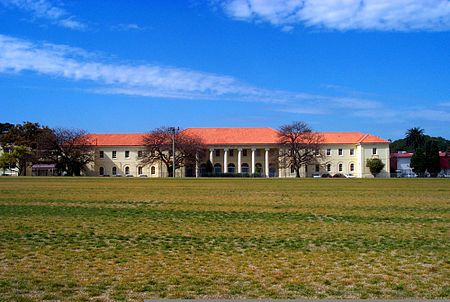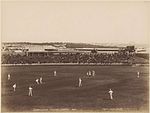Sydney Boys High School

Sydney Boys High School (”SBHS”), otherwise known as The Sydney High School (“SHS”) or High, is a government-funded single-sex academically selective secondary day school for boys, located at Moore Park, New South Wales, a suburb within the City of Sydney council, in Sydney, New South Wales, Australia. Established in 1883 and operated by the New South Wales Department of Education, as a school within the Port Jackson Education Area of the Sydney Region, the school has approximately 1,200 students from Year 7 to Year 12 — a number greater than most, if not all, other selective state schools — and is situated adjacent to its "sister school", Sydney Girls' High School. The school is a member of the Athletic Association of the Great Public Schools of New South Wales (AAGPS).Sydney Boys High School is an academically selective high school conducted by the NSW Department of Education. The school was moved to its current site at Moore Park in 1928. The school is bounded by Moore Park, Anzac Parade, Sydney Girls High School and Cleveland Street. The school regularly ranks highly among schools in New South Wales in terms of academic achievement, ranking 5th in the state in the 2017 Higher School Certificate, and has produced numerous notable alumni, or "Old Boys".
Excerpt from the Wikipedia article Sydney Boys High School (License: CC BY-SA 3.0, Authors, Images).Sydney Boys High School
Anzac Parade, Sydney Moore Park
Geographical coordinates (GPS) Address Website External links Nearby Places Show on map
Geographical coordinates (GPS)
| Latitude | Longitude |
|---|---|
| N -33.892222222222 ° | E 151.21944444444 ° |
Address
Sydney Boys High School
Anzac Parade
2021 Sydney, Moore Park
New South Wales, Australia
Open on Google Maps








